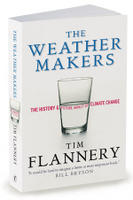- Worst drought in 42 years prompts declaration of State of Emergency in Amazon River delta.
- 1000's of towns and villages cut off from outside world as falling water levels make river unnavigable.
- The level of the tributary Rio Negro, has dropped 12 metres since July to just 16 metres.
Is this linked to global warming? Carlos Rittl, Greenpeace Brazil's climate campaigner says 'yes':
Greenpeace blames deforestation and climate change for the drought. "The Amazon is caught between these two destructive forces, and their combined effectsEven if the drought is not a result of GW it will certainly contribute to it, given that a lot of sunk carbon in the form of biomass, ecosystems and food-chains threatens to be released into the atmosphere.
threaten to flip its ecosystems from forest to savannah," Mr Rittl said.
To make matters worse, as the rainforest becomes increasingly dry, damaging wildfires are regularly breaking out across the region, destroying trees.Reference: The Sun-Herald, Oct 30, 2005: Mighty Amazon close to running out of water
 Global Warning, Climate Change, Amazon, Drought
Global Warning, Climate Change, Amazon, Drought




